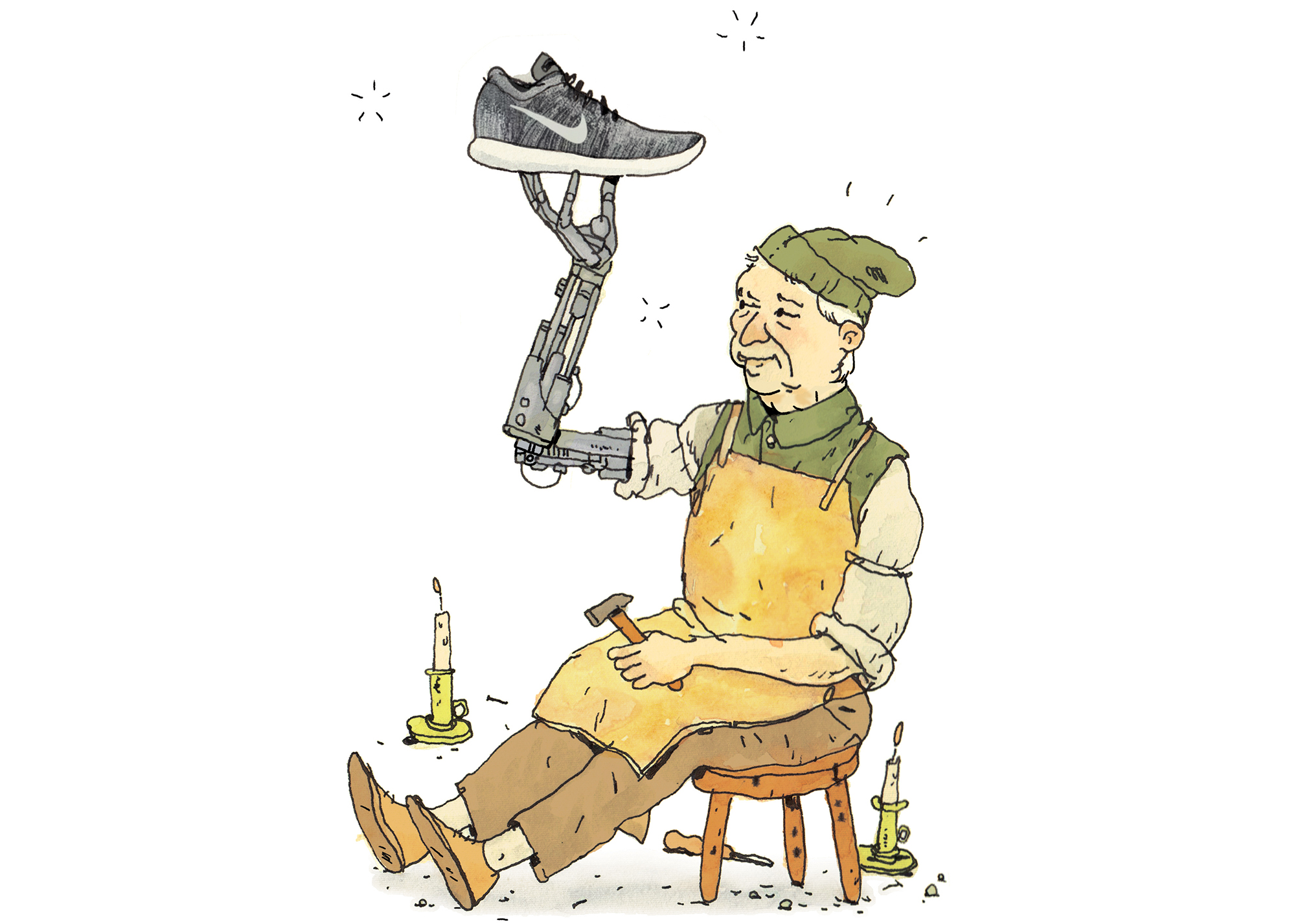We’re now at odds with our definition of the word “craftsmanship” as we know it. In many industries, it’s already causing strife between the legacy designers—who hold decades of experience, savoir faire, and know-how—and the tech-minded whizzes of today and tomorrow. When many think of good craftsmanship, they think of a handmade approach; others now simply consider craftsmanship as something indicating that the product is made impeccably well, regardless of how it’s made. Robots, autonomous assembly lines, and A.I. will surely be the nail in the coffin on what we consider a traditional handmade approach. This doesn’t mean, however, that craftsmanship is dead. Designing, whether by pixels or metrics, increasingly requires a deep understanding and appreciation of data as a key material, to be treated similarly to cotton, wood, silk, steel, or stone.
Still, the question remains: Is it the process or the product that defines good craftsmanship?
Nike’s Flyknit, one of the products that has helped define the brand in the past five years, provides an answer. To make that knit by hand is nearly impossible, but the design team who created it has a deep knowledge base when it comes to software and data, as well as an ability to leverage the latest manufacturing tools. All together, this has created what I consider a product of great craftsmanship. It’s made with near-perfect detail, at a price point that’s easily attainable, produced in a timely fashion, able to be customized in a multitude of ways, and considering the delicate nature of the knitted fabric, it holds up incredibly well.
Over the next few years, the fashion market in particular will see some of the most cataclysmic changes when it comes to craftsmanship. Good data will more than ever be leveraged to release styles with greater certainty of success, and manufacturing will become far more localized, with robots being able to produce the product with a higher level of quality and consistency. The whole concept of sizing will change. Designers and merchants currently spend so much time (and money) trying to ensure that the standard sizing fits their target audience the best, but the sizing of the future will simply be custom. You’ll get a quick scan, and the product will either be made on the spot or delivered to you hours later. There will be no need for it to be made overseas, to save on labor costs. The entire logistics model will become simplified.
I realize I may sound like I’m a futurist, and I am. But I’m also a humanist. Which causes me to have many a daily struggle upstairs. While I feel the best of craftsmanship tomorrow will require a largely automated, data-driven approach, I also question if that product will have soul. Or is that a foregone conclusion?
